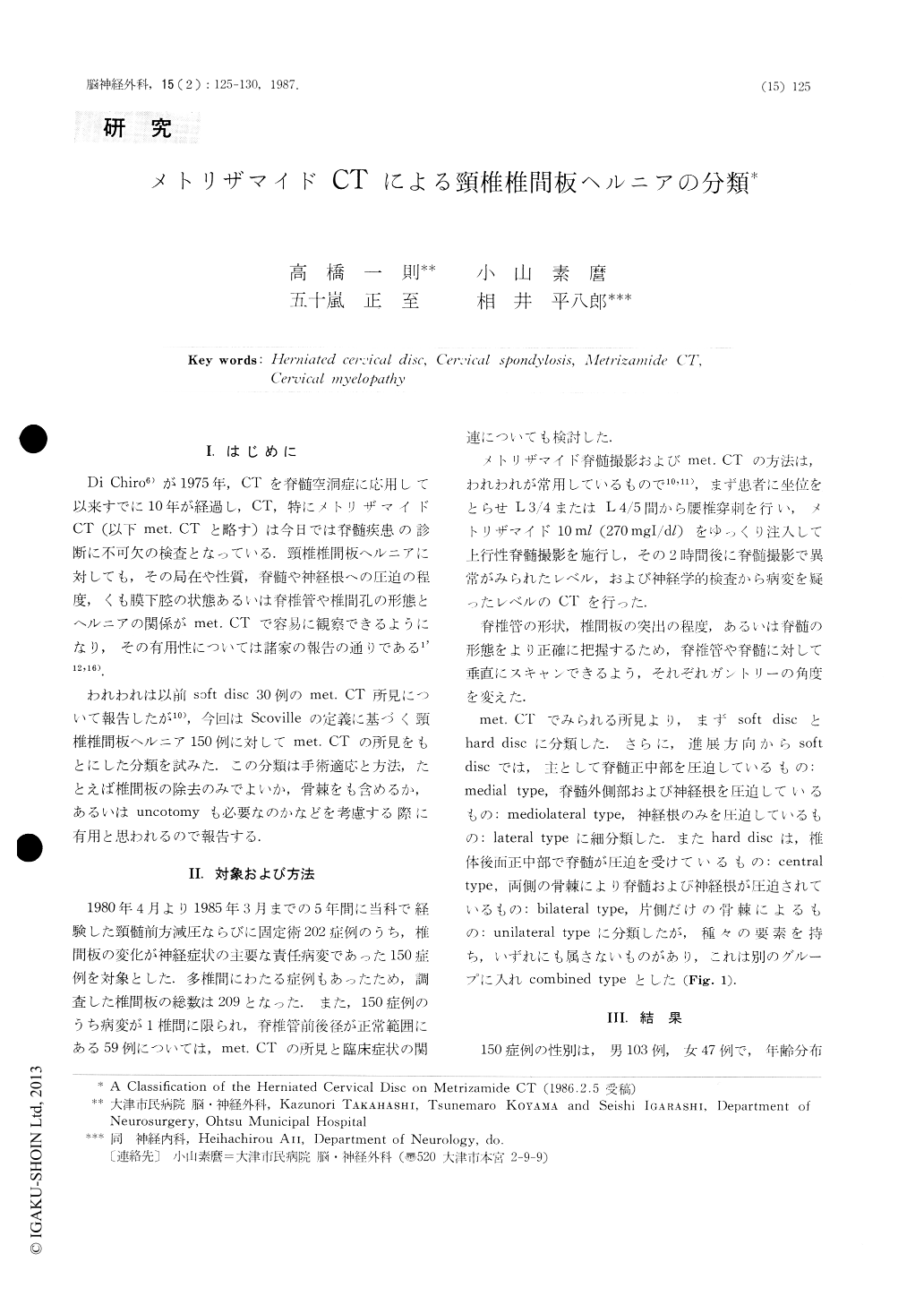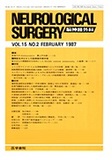Japanese
English
- 有料閲覧
- Abstract 文献概要
- 1ページ目 Look Inside
I.はじめに
Di Chiro6)が1975年,CTを脊髄空洞症に応用して以来すでに10年が経過し,CT,特にメトリザマイドCT(以下met.CTと略す)は今日では脊髄疾患の診断に不可欠の検査となっている.頸椎椎間板ヘルニアに対しても,その局在や性質,脊髄や神経根への圧迫の程度,くも膜下腔の状態あるいは脊椎管や椎間孔の形態とヘルニアの関係がmet.CTで容易に観察できるようになり,その有用性については諸家の報告の通りである1'12,16).
われわれは以前soft disc 30例のmet.CT所見について報告したが10),今回はScovilleの定義に基づく頸椎椎間板ヘルニア150例に対してmet.CTの所見をもとにした分類を試みた.この分類は手術適応と方法,たとえば椎間板の除去のみでよいか,骨棘をも含めるか,あるいはuncotomyも必要なのかなどを考慮する際に有用と思われるので報告する.
In 202 surgical cases of anterior fusion of cervical spine, there were 150 cases in which disc herniation was the responsible lesion. According to metrizamide CT (met. CT) findings of these 150 cases, we proposed to classify the herniated cervical disc into 7 types. In the 150 cases there were 103 men and 47 women. Seventy-seven had single disc lesion, 57 had the two and 6 had three disc lesions. The most frequent involvement was of C 5/6 in 107 cases (51.2%). The next was of C 6/7 in 50 cases (23.9%) and the third was of C 4/5 in 36 (17.2%).
Primarily herniated discs were classified into soft or hard disc.

Copyright © 1987, Igaku-Shoin Ltd. All rights reserved.


